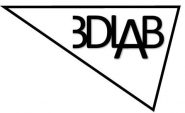IL PROGETTO
Il 3DLab-Sicilia Project è un’iniziativa dedicata all’innovazione e al progresso nel campo delle tecnologie immersive. Il progetto si propone di creare una rete di centri di realtà aumentata, virtuale e visualizzazione 3D in Sicilia, con l’obiettivo di offrire supporto tecnico alle aziende, alle PA e ai centri di ricerca interessati a sviluppare applicazioni che sfruttano queste tecnologie. Gli ambienti virtuali immersivi o CAVE (Cave Automatic Virtual Environment) sono tre, si trovano rispettivamente a San Giovanni La Punta, in provincia di Catania, a Troina, in provincia di Enna, a Palermo, e costituiscono l’infrastruttura 3DLab-Sicilia.
Il Progetto 3DLab Sicilia intende sviluppare e promuovere nuove applications in diversi settori, tra cui la medicina, il turismo, l’industria e la conservazione del patrimonio architettonico, contribuendo così allo sviluppo dell’economia locale e all’affermazione della Sicilia come polo di eccellenza nel campo di queste tecnologie innovative.
Le attività principali del Progetto 3DLab-Sicilia includono:
- La realizzazione di use case basati sulle tecnologie immersive, testati e validati all’interno dell’infrastruttura 3DLab-Sicilia grazie a software e apparecchiature all’avanguardia;
- Lo sviluppo di percorsi di collaborazione e affiliazione con altre reti internazionali;
- La creazione di un Liquid Lab sul territorio che possa mettere a disposizione delle aziende tecnologie e architetture innovative per aiutarle ad accelerare il loro percorso d’innovazione trasformando le idee in applicazione e servizi concreti;
- L’organizzazione di eventi e workshop per diffondere la conoscenza delle tecnologie immersive e delle opportunità da esse offerte, coinvolgendo non solo le aziende e le PA, ma anche i cittadini e il territorio, e favorendo la contaminazione creativa.
Cosa sono le tecnologie immersive
Le tecnologie immersive sono una serie di tecniche che permettono di creare esperienze coinvolgenti e realistiche attraverso l’uso di dispositivi elettronici. Questi dispositivi possono essere visori, cuffie, schermi e sensori che rendono l’esperienza virtuale estremamente simile a quella reale.
Le tecnologie immersive possono essere utilizzate in molti settori, come l’industria del gioco, l’educazione, la medicina e il turismo, per creare simulazioni e ambienti interattivi che coinvolgono l’utente a 360 gradi. Alcune delle tecnologie immersive più popolari sono la realtà virtuale (VR), la realtà aumentata (AR) e la realtà mista (MR), ognuna delle quali offre un’esperienza diversa e unica.
Il mercato delle tecnologie immersive
Il giro d’affari delle tecnologie immersive sta aumentando rapidamente grazie alla crescente domanda di esperienze coinvolgenti e immersive in diversi settori come il gioco, l’educazione, la formazione, la salute, il turismo e la valorizzazione dei beni culturali. Secondo un rapporto di Zion Market Research, il mercato globale delle tecnologie immersive dovrebbe raggiungere i 45,01 miliardi di dollari entro il 2026, con un tasso di crescita annuo composto del 31,23% nel periodo 2021-2026.
In particolare, il mercato dei giochi in realtà virtuale e aumentata sta vivendo una forte crescita, con l’industria dei videogiochi che rappresenta uno dei principali campi d’applicazione delle tecnologie immersive. Anche l’educazione e la formazione stanno diventando sempre più importanti, con l’uso di soluzioni che permettono agli studenti di imparare in modo più stimolante ed efficace.
Contemporaneamente le applicazioni nel settore della salute, come la terapia virtuale e la formazione medica, sono ormai diffuse, mentre il turismo utilizza sempre più spesso tecnologie immersive per consentire ai visitatori un’esperienza di fruizione unica e coinvolgente di monumenti e opere d’arte, in grado di riportare il visitatore indietro nel tempo attraverso la ricostruzione virtuale di spazi e ambienti.
Le tecnologie immersive consentono inoltre di rendere accessibili, sempre visitabili, beni architettonici e naturalistici in cui è impossibile abbattere le barriere architettoniche. Queste tecnologie rappresentano, dunque, un settore in forte crescita e le opportunità di business sono numerose e in continua evoluzione, spingendo sempre più aziende ad investire in questo campo.
For more information, read the report sulla realtà virtuale e aumentata.
3DLab-Sicilia - Indagine di mercato su VR e AR - finale
